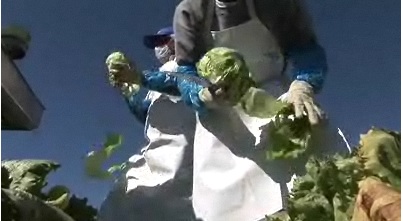On Dr. Phil’s “Ask the Doctor” segment today(1), a team of medical professionals talked with a woman who is seriously afraid of germs. Jennifer, who washes her hands so much that they are constantly cracked and bleeding—including after opening the mail or putting in a rented movie— said this fear developed after seeing what grew from a swab of her own skin in a microbiology class.
 There were multiple specimens alive and well in Jennifer’s house (as with most any house), according to swabs by microbiologist Carolyn Jacobs, who sampled several frequently contacted surfaces, such as light switches and the TV remote. In the kitchen, she targeted the sink and what she felt was one of the dirtiest areas in the home: the can opener.
There were multiple specimens alive and well in Jennifer’s house (as with most any house), according to swabs by microbiologist Carolyn Jacobs, who sampled several frequently contacted surfaces, such as light switches and the TV remote. In the kitchen, she targeted the sink and what she felt was one of the dirtiest areas in the home: the can opener.
The show’s M.D. identified bacillus and staphylococcus strains in samples from the can opener, but claimed they were “completely benign and can’t hurt you at all.” To prove his point, he grabbed a spoonful of the red stuff in the dish in front of him and smiled as he took a bite. Fortunately, it was only red Jell-O.
However, he reasoned, human immune systems serve a purpose and are meant to encounter microbes in everyday life. Jennifer admits, “I have this huge fear of my (six-month-old) daughter getting sick and dying,” from the bacteria and viruses she knows are everywhere.
The M.D. is right in saying that human bodies are built to deal with microorganisms—both harmful and benign. However, as in the case of consuming raw milk, some members of society are better equipped for them than others, and children may not be as well prepared to fight off tough pathogens.
.jpg) Jennifer is right to worry… a little.
Jennifer is right to worry… a little.
That attitude of compulsive cleanliness could do a lot of good for food handlers in the farm-to-fork distribution chain that lie beyond mom’s kitchen: fry cooks, butchers, servers, fruit pickers, slaughterhouse managers, and even even cheerleaders at lemonade stands. Something to think about.
Casey Jacob is the married version of former barfblogger Casey Wilkinson, and continues to work with Doug in various capacities.

 Even the hot dogs have evolved. How about a
Even the hot dogs have evolved. How about a  Anita Bivens, another diner at the restaurant, said,
Anita Bivens, another diner at the restaurant, said,  Although I’m very confident that Bobby’s culinary skills are far more advanced than Kim’s, one can only imagine that every eye was on Kim as she did her best
Although I’m very confident that Bobby’s culinary skills are far more advanced than Kim’s, one can only imagine that every eye was on Kim as she did her best  No matter what method or etiquette is used, it simply must be done during the workday. That leaves many wondering, how much time and money is spent doing your business in the bathroom?
No matter what method or etiquette is used, it simply must be done during the workday. That leaves many wondering, how much time and money is spent doing your business in the bathroom? .jpg) One organization seems to be doing the exact opposite; they’ll pay people to poop. The Environmental Studies Program at Oberlin College held an event last fall entitled the “
One organization seems to be doing the exact opposite; they’ll pay people to poop. The Environmental Studies Program at Oberlin College held an event last fall entitled the “ Here’s what Doug Powell does
Here’s what Doug Powell does.jpg) Under the plan, 25 percent of at least one of its produce items, including romaine lettuce, green bell and jalapeño peppers and red onions, for each of its 730-plus restaurants, will be sourced from small and mid-sized local farms.
Under the plan, 25 percent of at least one of its produce items, including romaine lettuce, green bell and jalapeño peppers and red onions, for each of its 730-plus restaurants, will be sourced from small and mid-sized local farms.  We thought we might try Acapulco Restaurant, a Mexican franchise in town. That is, until I read on FSnet that the restaurant had just been named as the source of a
We thought we might try Acapulco Restaurant, a Mexican franchise in town. That is, until I read on FSnet that the restaurant had just been named as the source of a  Glenn Fry helps run Taylor Farms de Mexico’s new $14 million plant in San José Iturbide, Mexico. He picked the land where it sits, designed just about every facet of it, and he manages more than 800 workers who plant, harvest and package produce – including lettuce, onions and broccoli – for export to the U.S.
Glenn Fry helps run Taylor Farms de Mexico’s new $14 million plant in San José Iturbide, Mexico. He picked the land where it sits, designed just about every facet of it, and he manages more than 800 workers who plant, harvest and package produce – including lettuce, onions and broccoli – for export to the U.S..jpg) The botulism outbreak, which would eventually sicken eight and lead to a recall of tens of millions of cans of food, was the first in a U.S.-made canned food in 33 years.
The botulism outbreak, which would eventually sicken eight and lead to a recall of tens of millions of cans of food, was the first in a U.S.-made canned food in 33 years..jpg)